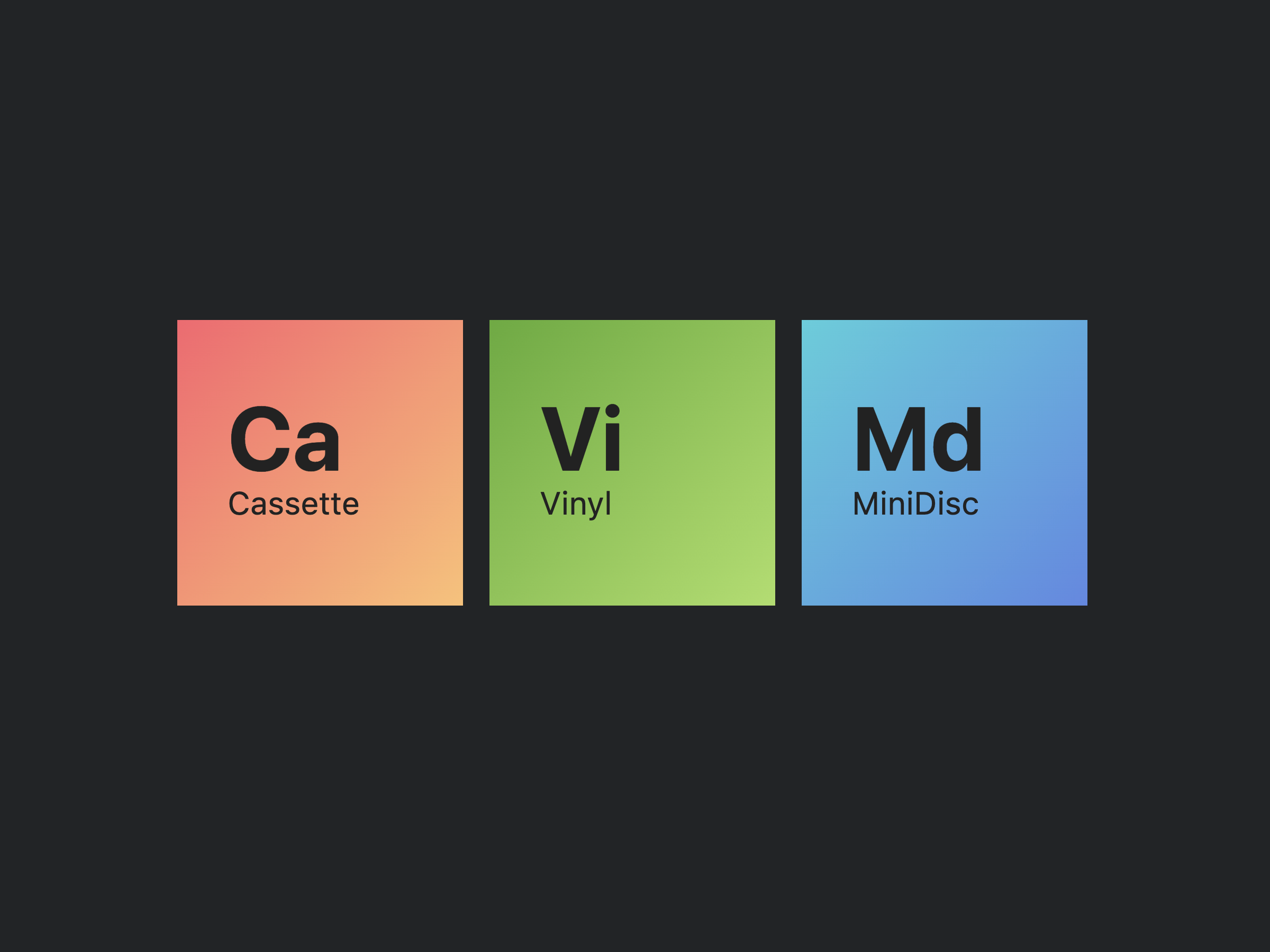Comparing Audio Quality and Popularity of Cassette Tapes, Vinyl Records, and MiniDiscs
In the world of music playback, several formats have left an indelible mark, each with its own distinct audio characteristics and unique charm. Cassette tapes, vinyl records, and MiniDiscs are three such formats that have maintained their popularity over the years, driven by a blend of nostalgia, aesthetics, and their individual sonic traits.
Cassette Tapes: Nostalgia Meets Analog Sound
Cassette tapes, often associated with the 1980s and 1990s, are known for their distinct analog warmth and charm. Despite their limitations, such as a restricted frequency response and susceptibility to noise and distortion, cassette tapes have managed to retain a dedicated following. Enthusiasts are drawn to the nostalgic value of these tapes and the tangible experience of playing and recording on them. The iconic “mixtape culture” also plays a role, allowing individuals to curate personalized playlists that carry a unique personal touch.
Vinyl Records: The Resurgence of Analog Fidelity
Vinyl records, a hallmark of the earlier decades, have experienced a remarkable revival in recent years. The analog nature of vinyl imparts a warm and rich sound that resonates with audiophiles seeking an authentic audio experience. While not without their own challenges, including surface noise and fragility, vinyl records offer a wider frequency response and dynamic range compared to cassette tapes. The resurgence of vinyl can be attributed to the tactile engagement they provide—flipping through album covers, placing the needle on the groove, and enjoying music in a deliberate, ritualistic manner. The aesthetic allure of vinyl, coupled with the pleasure of collecting physical music, has contributed to their sustained popularity.
MiniDiscs: Bridging Digital Precision and Portability
MiniDiscs, introduced as a digital alternative in the 1990s, combined the convenience of digital technology with the portability of a compact format. Unlike their analog counterparts, MiniDiscs offered improved audio fidelity and the ability to easily record and edit audio content. Despite their advantages, MiniDiscs faced competition from the emergence of CDs and later digital music players. They appealed to those who sought high-quality audio in a portable form and appreciated the ease of creating custom mixes. The format’s popularity was also fueled by its role in personal recording and sharing. Want to know more about MiniDiscs?
The Everlasting Appeal: Why These Formats Endure
Despite the prevalence of modern digital streaming and storage solutions, the allure of cassette tapes, vinyl records, and MiniDiscs remains steadfast for several reasons.
Nostalgia: These formats evoke memories of bygone eras, resonating with individuals who experienced the joy of music through them during their prime.
Aesthetic Experience: The physical nature of these formats—holding a cassette case, admiring album artwork, or placing a stylus on a vinyl—enhances the overall experience of music consumption.
Collectibility: The appeal of collecting physical music, along with vintage audio equipment, continues to draw enthusiasts who appreciate the tangible and historical aspects of these formats.
Sonic Identity: Each format imparts a unique sonic character to music, from the analog warmth of cassette tapes to the deep resonance of vinyl and the clarity of MiniDiscs.
In conclusion, the enduring popularity of cassette tapes, vinyl records, and MiniDiscs underscores the lasting impact of music formats on our cultural and personal lives. These formats serve as more than just vessels for audio; they embody memories, aesthetics, and emotions, making them cherished artifacts in the ever-evolving landscape of music appreciation.
